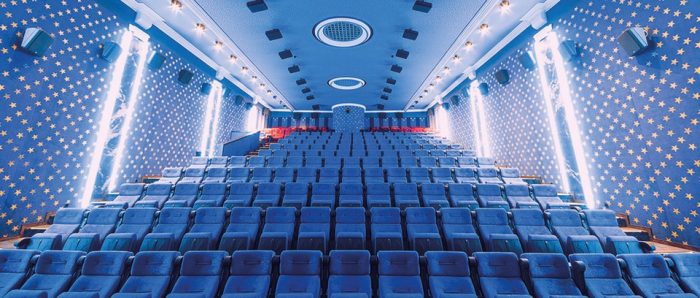What To Know Before Mixing In Dolby Atmos

What’s the Frequency, Kenneth?
When it comes to picking out where sounds originate, our ears are blisteringly fast and extremely accurate. But there are limitations. For example, lower frequencies (starting around 800 Hz and certainly below 200 Hz) are difficult to localize while frequencies over 1600 kHz are much easier to pinpoint. Also, the location of narrow band signals (like sine waves) is more difficult to perceive than those with lots of rich harmonic content. This is especially true in the frequency range of vocal intelligibility (between 500 Hz and 4 kHz).
Takeaway #1: Higher-pitched sounds with strong transients and stochastic spectral components are more easily localized and therefore have more options in terms of physical movement. They can move further and faster with greater effect.
Motion of the Ocean
When sounds move through space, their dynamic and emotional impact increases, but not all 3D motion is created equal. In order to be perceived as a single, coherent movement, sounds circling a listener must take more than ~250ms to make the journey. If they move faster than that, the source will appear to oscillate and become disorienting – which, of course, could be used to creative effect…
Takeaway #2: The physical movement of sound adds impact and energy, but a little goes a long way. Often a slow, gentle, local movement is more than enough to breathe life into your mix.
But I Can’t Fly!
We have an inherent tendency to connect aural events to coincidental visual acts. Everyone has experienced this watching musicians perform – the sound of an amplified guitar may be coming from amplifiers sitting at the sides of the stage but our ears and eyes make us feel as if the sound is coming directly from the guitar itself – especially when we’re watching from a distance.
Perhaps this is the primary reason it doesn’t feel right to hear a drumset panning side to side? Even when we can’t see the source, our brains expect physical positioning to match our real world experience.
Takeaway #3: Understand the role each and every musical element plays in the construction of your mix and use those observations for creative good.
A Musical Vector is Born
Timbre describes the spectral components of a single musical object or group of objects over time and, as with rhythm and harmony, the savviest composers can build meaningful connections by manipulating these relationships. Spatialization deals with the dimension of individual events, their relationship in physical space, and their relationship TO the space itself. That said, movement of sound through space is not an intrinsic quality of the sound.
Takeaway #4: Working in Dolby Atmos offers you opportunities to craft new connections and build meaningful relationships between the places individual musical elements inhabit. Not sure where to start? Try experimenting with contrast…
Serve Your Master
Moving a boring sound around in space will not make it less boring. However not all musical elements are meant to be exciting on their own. (Ever play the french horn in a Sousa march?) Consider the psychological impact of the musical intent and the role elements can play together – in combination.
Takeaway #5: Connect elements of similar intent and activity to clearly defined regions of physical space. Note that “connect” could suggest pitting elements against each other to create contrast.
The Cocktail Effect
When you hear a stereo recording of a dinner party, the crowd sounds like a single wash of sound. It’s nearly impossible to separate individual voices and conversations – this is the Cocktail Effect. Reducing the points of origin creates spatial masking which essentially helps us “glue” elements together a stereo mix, but elements separated in space also become separate and distinct in our perception.
Takeaway #6: While the spatial separation can “un-glue” your mix, it also allows you to control the direction of the listener’s focus and attention, thereby opening up creative possibilities.
Knowing the limitations of our ears can be EXACTLY the thing we need to create novel effects that engage and excite our listeners. Or it could be key to building a subtly expanded version of a well-loved stereo mix. Either way, the key to crafting effective spatial mixes is understanding those cognitive limits so you can use them to your artistic advantage.

